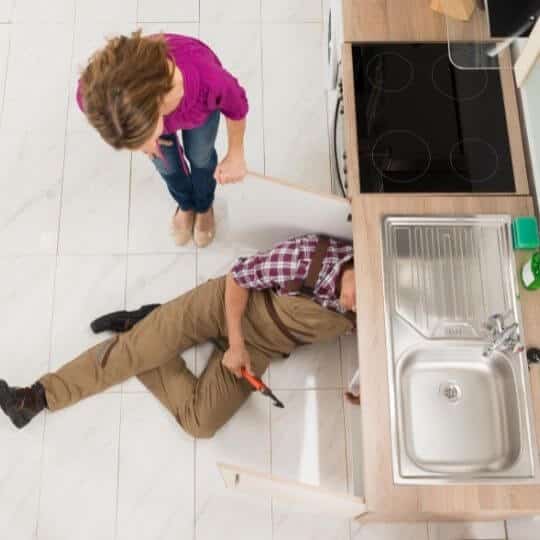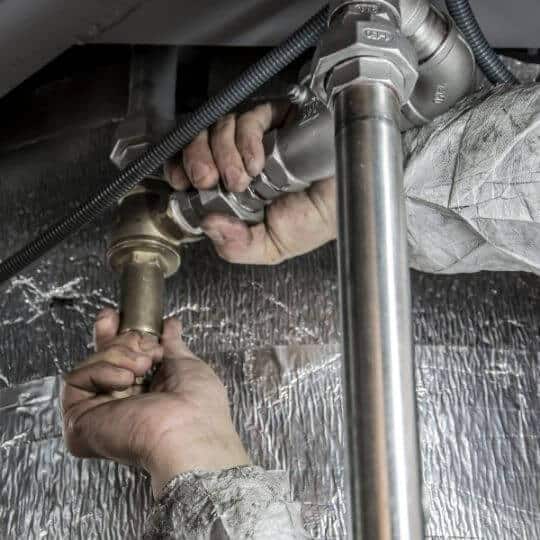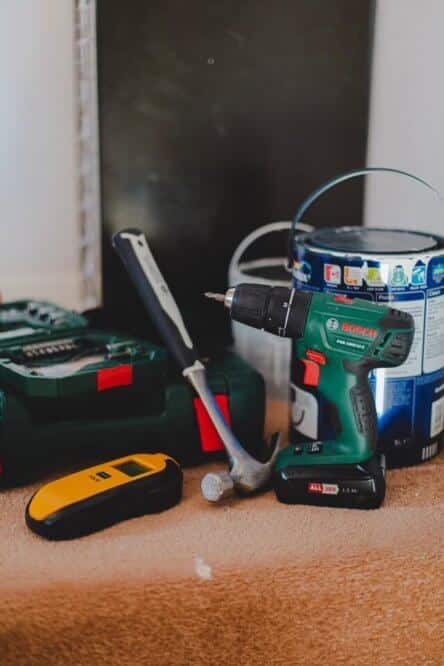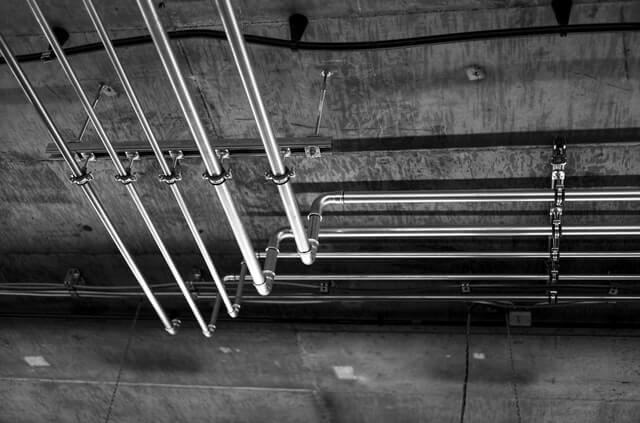Are you constantly hearing loud banging noises in your plumbing system? You are probably dealing with the water hammer phenomenon. But how does a water hammer arrestor work?
Aside from being annoying, this hydraulic shock also suggests that something is wrong with your pipes.
The most common fix is installing a water hammer arrestor.
This simple device can be easily installed by people with minimal plumbing skills.
Have you decided to install your own water hammer arrestor?
You probably want to know – how does a water hammer arrestor work?
And do water hammer arrestors work, actually?
In this post we will explain how does a water hammer arrestor work. We’ll also share some tips on best way to install water hammer arrestor.
What is water hammer and what causes it?

Normally, a water pipe should be rather silent. It’s OK to hear a gentle whooshing as water passes through pipes, but a banging noise is definitely abnormal.
Water hammer is also called a hydraulic shock and occurs when a water appliance is shut off suddenly. This causes an increase in pressure, determining water to redirect to another place.
Unlike air, water is not a compressible fluid, and when it has no place to go it bangs against pipe walls. This causes that concerning noise and the impression that your pipes are in danger of bursting.
There are multiple causes of water hammer:
- Water in air chambers – air chambers regulate pressure and prevent the emergence of water waves in pipes.
- High water pressure – when pressure exceeds 80 psi, it’s recommended to install a pressure regulator.
- Intense appliances – commonly washing machines, dishwashers, ice makers, and sprinkler systems. These have a high water flow.
- Having old pipes – changes in water pressure can cause loose pipes to swing and wiggle.
What is a water hammer arrestor?
The water hammer arrestor is a small plumbing fixture you can add to your pipes.
What it does is it arrests or stops noises by cushioning water with air. Unlike water, air compresses. Introducing this air cushion prevents water from hitting a sudden wall when you close a valve rapidly.
Water no longer lashes back in a wave and no longer causes that loud banging noise.
Unlike old air chambers that needed to be regularly emptied of water and refilled with air, arrestors don’t require maintenance. This makes them very convenient and easy to use. On the other hand, they might need to be replaced after several years of use.
But what’s inside a water hammer arrestor?
These small fixtures consist of a spring and a waterproof air bladder. The air bladder absorbs the force of moving water.
Water hammer arrestors are used both in residential buildings and commercial or industrial facilities. In manufacturing settings, they are used to prevent damage to expensive instruments.
How does a water hammer arrestor work?

Truth is you don’t need to know how this small fixture is working in order to install it.
Like most parts nowadays, water hammer arrestors are made to be easy to install. And not worth repairing. If your water hammer arrestor is defective, you just buy another one and replace it.
But let’s see how this great and practical invention works.
Water hammer arrestors have an air cushion that absorbs water momentum. There is also a piston that moves when there is a spike in water pressure.
Behind the piston there is an air chamber. When the piston moves, gas compresses and provides more space for water to enter the arrestor rather than hit pipes.
Remember that water develops this momentum as it flows fast through the pipes. When a valve from a water appliance closes suddenly, all that flowing water hits pipe walls and goes back creating a wave.
As for the installation of these arrestors, they sometimes have screw-on connections, being as easy to attach as a garden hose.
Benefits of using a water hammer arrestor
You can choose to ignore the water hammer in your pipes, but this is not a good idea. The high pressure of water can damage pipes in time and even cause them to burst.
Using a water hammer arrestor comes with the following benefits:
- Absorbing the shock caused by water suddenly stopping
- Stopping the noise associated with the water hammer phenomenon
- Being available for both residential and commercial applications
- Preventing problems such as a burst pipe and damage to your house
How to choose the right water hammer arrestor?
Knowing how does a water hammer arrestor work is not that important. The success of these fixtures depends a lot on other factors. And the first of them is choosing the right size of water hammer arrestor.
Making the right choice depends on:
- The fixture: water close, urinal, lavatory, bathtub, shower head, service sink, dishwasher, clothes washer, etc.
- The type of supply control: flush valve, flush tank, faucet, mixing vale, faucet, or solenoid valve.
- The setting where the fixture is used – public or private, cold/hot water line.
How to install a water hammer arrestor?
The next factor to take into consideration when using a water hammer arrestor is correct installation. The good news is these fixtures are very easy to install. You won’t need a plumber to stop the water hammer phenomenon.
Here are the main steps to follow for best way to install water hammer arrestor:
Find the source of the problem
Water hammer arrestors are best installed close to the fixture that causes the problem. Look first at washing machines and dishwashers because they start and stop the water suddenly. Keep in mind that other plumbing fixtures can be the source of the problem, too. It can be a toilet tank, an ice maker, or a drinking water fountain. You will need to install the water hammer arrestor within six feet of the valve that is causing the pressure wave.
- Prepare tools and supplies
The first, obvious preparation is purchasing a water hammer arrestor the right diameter for your pipes.
Depending on the type of pipes that go to and from the fixture, you might need tools such as wrenches, pliers, and materials for soldering copper. For PVC pipes, you will need joining plastic pipe materials.
Also, don’t forget a bucket to collect any water that can drain and old towels to clean up the mess. - Gain access to the spot
Next you will need to expose the appliance that is causing the noise. This means you might have to pull a fixture away from the wall or open an access panel. If the pipes are closed behind walls, you might have to make a hole to reach them. - Turn water off
You can either turn off water to that room or turn off water to the entire house. Drain pipes by opening fixture until they are empty. - Remove a pipe section
Does water hammer arrestor need to be vertical?
Not necessarily.
-
- Read the instructions on the product package.
- Most water hammer arrestors commercially available can be installed in any position.So, choose the spot where you can install the arrestor as easy as possible and cut a portion of the pipe.
- The size of the cut section depends on the size of the water hammer arrestor fitting.
- Prepare the pipes.For copper pipes, adjust the ends of the tubes by sanding and polishing them. You will need to sand off burrs for plastic pipes as well.
- Install the arrestor
- And we are finally at the best way to install water hammer arrestor. You need to connect the pipes to the T-pipe to which the water hammer arrestor will be connected. Next, connect the arrestor to the T-pipe.
- For copper pipes you will need to solder; for plastic pipes, apply primer and contact cement.
- Test your new fixture
- Make sure the cement has dried before turning the water back on. For copper pipes, wait until the connection cools. Use the appliance as usual and in those instances that caused the water hammer. At the same time, check for leaks.
To Sum Up
So How does a water hammer arrestor work?
The functioning of this fixture is very simple: water pouring through a pipe pushes the piston inside the arrestor. The gas behind the piston compresses, making place for water so it doesn’t hit pipes with that loud banging noise.
More important than how this fixture works is choosing the right size and installing it properly. This way, you will definitely get rid of the water hammer phenomenon.

Michael Davis is a heating & plumbing expert who currently works as independent contractor in SC. He also writes for Plumbertip.
For almost 10 years he worked on various plumbing tasks across South Carolina.


